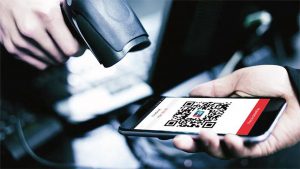THE PHILIPPINES has made progress in promoting digital payments, but there are still many barriers to hurdle before it meets its digitalization goals, the Bangko Sentral ng Pilipinas (BSP) said.
“We recognize that while there is a sustained increase in the use of digital payments, there are still gaps that need to be addressed holistically,” BSP Deputy Director Maria Christina S. Masangkay said during a central bank’s public information campaign.
“Indeed, we have come a long way but still have far to go. We have reached our 50% goal, yet survey results show that we still have a lot to overcome,” she said in mixed English and Filipino.
Earlier data from the BSP showed the share of online payments in the total volume of monthly retail transactions rose to 52.8% in 2023 from 42.1% in 2022. This was slightly higher than the central bank’s target of digitalizing 50% of the volume of retail payments by end-2023.
The BSP is targeting to achieve a 60-70% share of digital payments over the total retail payment volume by 2028.
Ms. Masangkay said there is a need to improve access to digital infrastructure, enhance internet connectivity, make fees for digital payments more affordable and promote the widespread acceptance of digital payments.
“In overcoming these barriers, the BSP has been proactive in providing the enabling policy and regulatory framework that supports the digitalization of priority payment risk cases most relevant to consumers, may they be individuals, businesses or the government.”
“Some of this may not fall squarely within the BSP purview. Thus, strategic collaborations with stakeholders, both from the government and the private sectors, are being pursued,” she added.
Ms. Masangkay noted the central bank’s recent efforts to promote digital payments, such as pushing for PESONet, InstaPay, QR Ph and Bills Pay Ph to become the “preferred mode of payments” for Filipinos.
“Other payment streams in the pipeline will further support the person-to-business, business-to-business, and person-to-person segments,” she added.
The BSP earlier announced it was developing new facilities to boost digital payments, such as the request to pay (RTP) facility and direct debit facility.
Last year, the bulk or 84.4% of retail payments made were from merchant and supplier payments, BSP data showed.
The central bank also seeks to enhance cross-border payments to “increase the business competitiveness of the Philippines’ e-commerce, exports and international trade sector,” Ms. Masangkay said.
In March 2023, the BSP and four other central banks in the region said they would connect their domestic instant payment systems through the Bank for International Settlements’ Project Nexus.
“The BSP’s efforts to promote digitalization of payments are strategically geared towards advancing financial inclusion by ensuring an efficient, safe, and secure digital payments ecosystem that supports the needs of our stakeholders while also increasing the number of Filipinos who have access to financial services,” BSP Assistant Governor Zeno R. Abenoja said.
BANKNOTES STILL NEEDED
Meanwhile, GlobalSource Partners said the Philippines still requires the use of banknotes despite the rapid shift to digital because it lacks the infrastructure to accommodate the transition.
GlobalSource country analysts Diwa C. Guinigundo and Wilhelmina C. Mañalac said the country’s digital transition “still has a long road ahead.”
“If some quarters believe that these trends could dislodge the use of banknotes in the Philippines… this may not be the case, just as yet,” they said in a report.
“The reason is obvious. The Philippines continues to be challenged by the limited communication connectivity including the issues of internet coverage, speed and cost. There is a big deficit in physical infrastructure that is critical to online, digital payments and settlements.”
It cited the BSP’s recent announcement of collaborating with German government banknote printer Bundesdruckerei GmbH to improve currency production and share knowledge on payment management.
BSP Governor Eli M. Remolona, Jr. said there is still a need for banknotes even as more people shift to electronic payments.
Banknotes should also be made “more secure, more durable and even more sustainable,” Mr. Remolona said.
GlobalSource said the partnership to future-proof banknotes showed that the “transition to a higher level of digitalization may still be a remote target, considering the challenges of weak connectivity and infrastructure backbone.”
At the start of 2024, internet penetration in the Philippines stood at 73.6%, according to the “Digital 2024” report by DataReportal. This meant that 26.4% of the country’s population remained offline at the beginning of the year.
“Between urban cities and rural areas, digital access could not be more stark. Fixed broadband speed averages only around 95 Mbps (megabits per second), so much lower than say, Singapore, where internet speed can be as fast as 291 Mbps,” GlobalSource added. — Luisa Maria Jacinta C. Jocson

